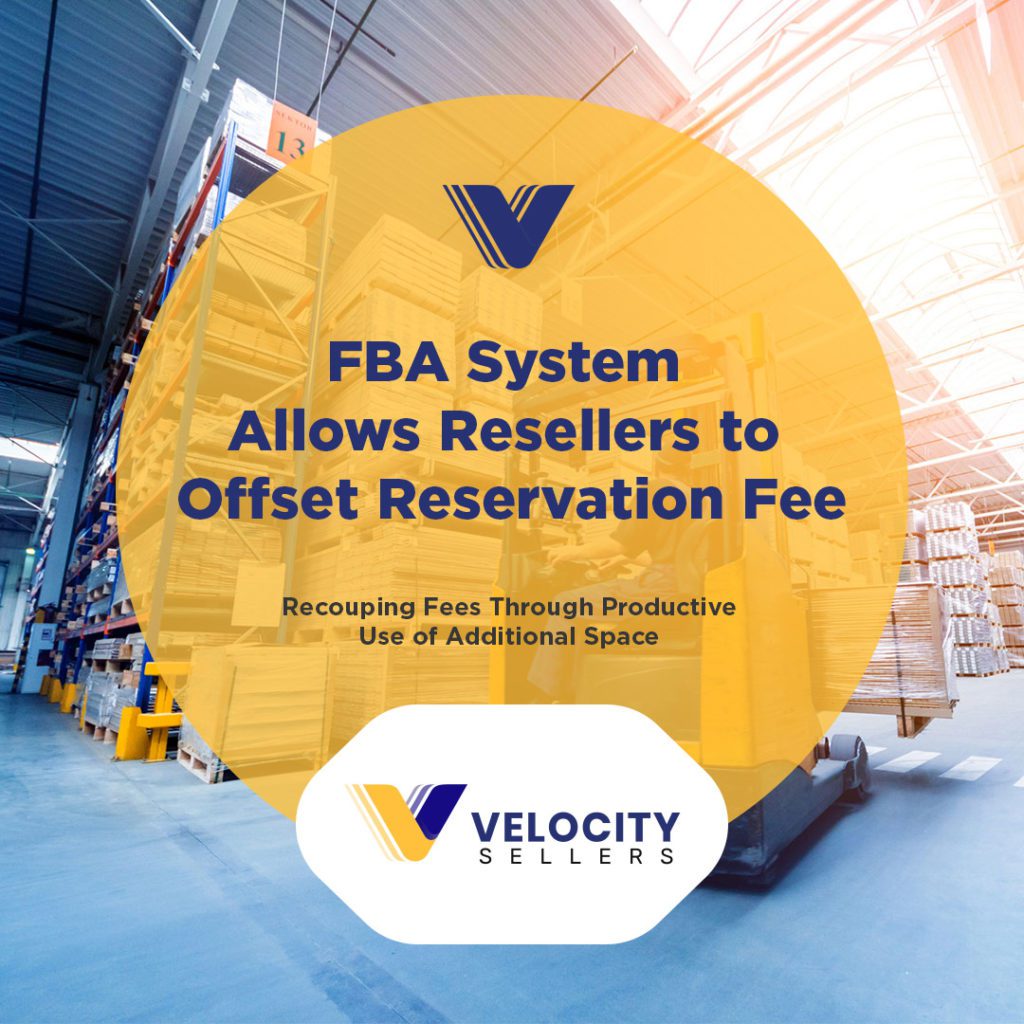- Amazon Introduces FBA Storage Auctions
- Overhauled Capacity Limits to Begin March 1st, 2023
- How can sellers bid for additional warehouse space?
- How does Amazon determine the maximum warehouse space for each seller?
- Potential for Increased Sales
- Recouping Fees Through Productive Use of Additional Space
- Simplifying the Inventory Management Process
Navigating Inventory Limitations
For some time, Amazon has been experimenting with its inventory limitations, which prompted sellers to be quick on their feet. Recently, Amazon has reduced the storage limit for its Fulfillment by Amazon (FBA) service, posing challenges to sellers’ inventories. Sellers couldn’t use 3PL warehouses, which would have been a more suitable option for storing stocks. As a result, users have lost their potential sales.
Adapting to New Inventory Caps
This update has put an artificial ceiling on the sellers’ revenue due to various restrictions over the past years. This situation can be frustrating. Sellers mostly lament the unpredictability of these changes. They also criticize Amazon’s poor communication about the impact on them.
Amazon requires sellers to use the FBA service. Nevertheless, several sellers shun away from FBA due to its high costs. Moreover, sellers saw an annual 10% increase in shipping fees over the last few years.


At the start of this year, Amazon is trying to streamline its FBA system and give sellers more control and predictability over their inventory. The e-commerce shop will allow sellers to exceed their dedicated warehouse space through an online auction.
Amazon has transformed its FBA service into an online auction. Here, sellers can bid for extra storage beyond their inventory limits. This setup offers a chance to boost sales and recoup the entire reservation fee. Sellers hitting their capacity limits can still request more storage. This is especially useful if they anticipate high demand for certain products from their customers. When bidding for additional storage, sellers need to specify:
- The extra capacity they need (up to 20% of their initial limit or 2,000 cubic feet, depending on which is greater)
- the maximum reservation fee they are willing to pay for the extra space.
The FBA program may be a good way for sellers to resolve Amazon’s constantly growing warehouse and supply chain issues.
Amazon FBA Auctions: What it is and How it Works
Last 2020, Amazon updated its storage policy, impacting several FBA sellers. A year later, Amazon shifted strategies by removing ASIN-level limits in favor of storage-type-level restrictions. The retail giant frequently assesses seller performance in the marketplace. This evaluation includes sales forecasts for ASINs, IPI scores, and fulfillment center capacity, among other factors. These factors influence the maximum warehouse storage the sellers can use for a given period. The limitations have become unpredictable and limiting over the past years, which impacted sellers’ revenue.
Now, Amazon is launching a new storage limits policy – Online Auctions. With over 90% of Amazon sellers using FBA, it would be interesting to see how the bidding goes once the new policy takes effect.


Amazon is continually updating its FBA program to tackle warehouse and supply chain challenges. The latest policy will be implemented on March 1st, 2023.
Overhauled Amazon FBA Storage Capacity Limits to Begin March 1st, 2023
Online bidding isn’t new to sellers, as each Amazon PPC campaign involves keyword auctions. However, Amazon still surprises its sellers with its new FBA policy. Sellers can have more than their dedicated warehouse storage through bidding. Firstly, those who bid the highest can gain extra capacity, with Amazon stating fair criteria for granting requests. Subsequently, Amazon will allocate network capacity to each seller, beginning with the highest reservation fee and moving downwards. Additionally, sellers can utilize the storage for the requested period, potentially available up to a month in advance of the requested date. This arrangement will finally give them time to create shipments and arrange inventory in the fulfillment centers.
Amazon’s January announcement of changes to its seller account structure should make it easier for sellers to forecast sales and plan purchases. Users can add products to their inventory for more space, thus the possibility of generating more sales. However, if the users’ sales forecast isn’t better than the limits system, they can potentially lose more margin to fees.
How can sellers bid for additional warehouse space using Amazon FBA Storage Auctions?
Amazon still burdens sellers with possible penalties for exceeding their storage capacity limits. With the launch of this program, Amazon has made it easier for sellers to secure additional storage space without incurring extra costs. According to Amazon’s help page, sellers can bid on up to 20% of their initial allocation or 2,000 cubic feet at a time, whichever is greater. You can do this in increments of 100 cubic feet or less. If Amazon accepts the additional bid upon inventory, the seller will earn advertising fees for each item sold during the additional space used.
Given this formula, suppose a seller has 200 cubic feet of storage space; they can bid for extra cubic feet in the Amazon auction. Moreover, the Amazon auction will consider sellers’ requests case-by-case, with no guarantee of additional storage space being granted. Amazon auction assures sellers that they might break even if they are successful with their supplementary inventory. Sellers can earn a $0.15 performance credit for every dollar of sales they can generate via the additional capacity during the period requested in the Amazon auction. This is so users can offset 100% of the reservation fee they use to obtain more storage in the Amazon auction.
The Capacity Manager allows sellers to purchase additional storage space in the Amazon auction, using a reservation fee as collateral.
The Amazon auction will prioritize requests based on the highest reservation fee per cubic foot and allocate available space accordingly, moving from highest to lowest bids. Since performance credits offset the reservation fee in the Amazon auction, sellers may not pay for any storage space they don’t utilize. This program was structured to give users more authority over their storage without paying the penalty for inefficient use of their inventory in the Amazon auction.
How does Amazon determine the maximum warehouse space for each seller?
Sellers can avoid paying overage fees with inventory restrictions. They can be charged an overage fee if the on-hand inventory in Amazon’s fulfillment centers exceeds the capacity limit. This doesn’t include available shipments. Overage fees are derived from the highest estimated or confirmed limit Amazon provides for the requested period. With overage fees, sellers don’t have to pay exorbitant inventory levels. Sellers with outstanding inventory levels shouldn’t worry about overage fees.
Potential for Increased Sales w/ Streamlined Inventory Management
Dynamic Pricing in Various Industries
Brands have been using online auctions known as surge or dynamic pricing to resolve supply and demand issues. This approach, where the price of a product or service is set to fluctuate in response to customer demand, has been widely adopted across various sectors. The airline industry, one of the pioneers of this pricing model, adjusts ticket prices based on factors like season, seat type, and booking lead time. Prices for the same flight can vary significantly depending on the purchase time, reflecting the industry’s adoption of dynamic pricing to respond to seasonal changes and other variables.
Adoption Beyond Airlines
The concept of dynamic pricing extends beyond the airline industry. Tech giants like Google and entertainment conglomerates like Disney have also implemented this strategy. Google Ads, for instance, alters keyword costs based on real-time supply and demand, while Disney adjusts theme park admission prices according to the season, visit dates, and days of the week, showcasing the versatility of dynamic pricing across different business models.
Amazon’s Dynamic Pricing Strategy
Amazon stands out as a major adopter of dynamic pricing, updating its product prices every 10 minutes to reflect consumer response. This strategy, powered by data analytics, machine learning algorithms, and real-time adjustments, has reportedly increased Amazon’s profits by 25%. The company’s ability to swiftly adapt prices in line with demand fluctuations exemplifies the effectiveness of dynamic pricing in the retail sector.
Enhanced Sales Through FBA’s New Program
Within Amazon’s FBA program, the new storage limit system offers sellers an opportunity to boost sales through better inventory forecasting. After investing in extra storage and achieving increased sales, Amazon introduced a mechanism where sellers might not need to bid for additional storage in the subsequent month. Despite the higher costs associated with inventory limits, the potential for sellers to recover their reservation fees through performance credits presents a financially viable model, encouraging efficient inventory management and sales optimization.


Recouping Storage Fees Through Productive Use of Additional Space
Besides the predictability and control over their inventory levels, sellers can also earn performance credit and get a refund of their reservation fee. They can get a $0.15 performance credit. With efficient usage of the additional space, they can recoup the entire price of their reservation. However, the same holds if they aren’t smart with their space allocation. Sellers cannot recover from their reservation fee.
These changes will allow sellers to get extra space and thus generate more sales when their forecasts are better than Amazon’s limits system. The idea is that after paying for the extra space but selling more, Amazon will increase the limit, and the seller will not have to bid for more space next month. However, the bidding process can be complicated. Moreover, it allows sellers to lose even more margin on fees.
Simplifying the Inventory Management Process on Amazon FBA
Amazon’s single, month-long inventory capacity limit is said to streamline inventory management. This change will address some of the most common customer pain points and make it easier to plan how much inventory to procure and manufacture. For better inventory planning, Amazon will provide an estimated capacity limit for the next three months. Its system is designed to track sellers’ IPI score or Inventory Performance Index, measuring how sellers use their storage efficiently. The retail giant will notify sellers when a higher or lower estimated limit becomes available.
If you’re navigating the complexities of Amazon FBA, you might find our article Top 3 Amazon FBA Issues & How to Fix Them incredibly helpful. It’s packed with practical solutions and tips that could be just what you need. Check it out for some valuable insights.

